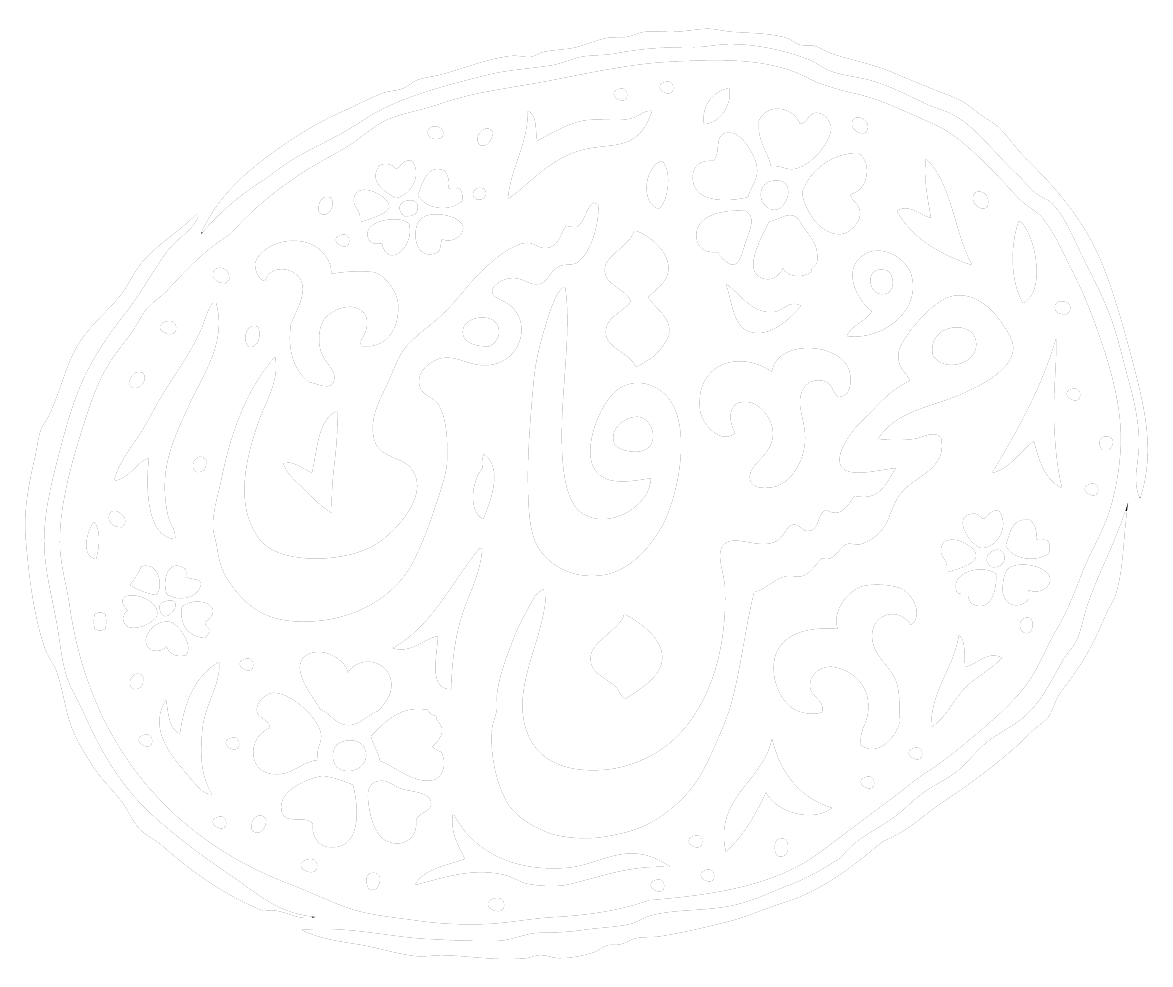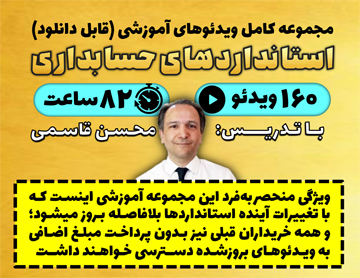ابزارهای مالی مشتقه (استاندارد حسابداری 36 ابزارهای مالی - ارائه (مصوب 1397) - پیوست: رهنمود بکارگیری)
رب24. ابزارهای مالی، شامل ابزارهای اولیه (مانند دریافتنیها، پرداختنیها و ابزارهای مالكانه) و ابزارهای مالی مشتقه (مانند اختیارهای معامله مالی، قراردادهای آتی و پیمانهای آتی، سواپ نرخ سود تسهیلات و سواپ ارز) است. ابزارهای مالی مشتقه تعریف ابزار مالی را احراز میكنند و در نتیجه، در دامنه كاربرد این استاندارد قرار میگیرند.
رب25. ابزارهای مالی مشتقه، حقوق و تعهداتی ایجاد میكنند كه اثر آن، انتقال یك یا چند ریسك مالی مرتبط با ابزار مالی اولیه پایه بین طرفین است. در آغاز، ابزارهای مالی مشتقه برای یك طرف نسبت به مبادله داراییهای مالی یا بدهیهای مالی با طرف دیگر در شرایطی كه بطور بالقوه مطلوب است حق قراردادی ایجاد میکند، یا برای مبادله داراییهای مالی یا بدهیهای مالی با طرف دیگر در شرایطی كه بطور بالقوه نامطلوب است تعهد قراردادی ایجاد مینماید. با این وجود، این ابزارها عموماً[1]نه منجر به انتقال ابزار مالی اولیه پایه در آغاز قرارداد میشوند و نه لزوماً چنین انتقالی در سررسید قرارداد انجام میگیرد. برخی ابزارها هم دربردارنده حق و هم تعهد نسبت به انجام مبادله هستند. از آنجا كه شرایط مبادله در آغاز، برای ابزار مشتقه تعیین میشود، با تغییر قیمتها در بازارهای مالی، ممكن است این شرایط، مطلوب یا نامطلوب شود.
رب26. اختیار فروش یا خرید برای مبادله داراییهای مالی یا بدهیهای مالی (یعنی ابزارهای مالی به غیر از ابزارهای مالكانه خود واحد تجاری)، حق به دست آوردن منافع اقتصادی آتی بالقوه مرتبط با تغییرات در ارزش منصفانه ابزار مالی پایه آن قرارداد را برای دارنده ایجاد میكند. برعكس، صادرکننده اختیار معامله، برای محرومیت از منافع اقتصادی آتی بالقوه یا تحمل زیانهای بالقوه از دست دادن منافع اقتصادی مرتبط با تغییرات در ارزش منصفانه ابزار مالی پایه، متعهد خواهد شد. حق قراردادی دارنده و تعهد صادرکننده، به ترتیب، مطابق با تعریف دارایی مالی و بدهی مالی است. ابزار مالی پایه قرارداد اختیار معامله میتواند هر دارایی مالی، شامل سهام سایر واحدهای تجاری و ابزارهای دارای سود ثابت باشد. اختیار معامله ممکن است صادرکننده را به جای انتقال دارایی مالی، ملزم به انتشار ابزار بدهی کند، اما ابزار پایه اختیار معامله، در صورت اعمال اختیار معامله، دارایی مالی دارنده محسوب خواهد شد. حق دارنده اختیار معامله نسبت به مبادله دارایی مالی در شرایطی كه بطور بالقوه مطلوب است و تعهد صادرکننده به مبادله دارایی مالی در شرایطی كه بطور بالقوه نامطلوب است، از دارایی مالی پایه كه در صورت اعمال اختیار معامله مبادله میشود، متمایز است. ماهیت حق دارنده و تعهد صادرکننده، تحت تأثیر احتمال اعمال اختیار معامله قرار نمیگیرد.
رب27. مثال دیگری از ابزارهای مالی مشتقه، یک پیمان آتی است كه در مدت شش ماه تسویه میشود و طبق آن، یك طرف (خریدار) تحویل 000ر000ر1 ریال نقد را در ازای اوراق مشارکت دولتی با نرخ سود ثابت و مبلغ اسمی 000ر000ر1 ریال، و طرف دیگر (فروشنده) تحویل اوراق مشارکت دولتی با نرخ سود ثابت به مبلغ اسمی 000ر000ر1 ریال را در ازای 000ر000ر1 ریال نقد تعهد کرده است. طی شش ماه، هر دو طرف حق قراردادی و تعهد قراردادی برای مبادله ابزارهای مالی دارند. در صورتی كه قیمت بازار اوراق مشارکت دولتی به بیش از 000ر000ر1 ریال برسد، شرایط برای خریدار مطلوب و برای فروشنده نامطلوب میشود. اگر قیمت بازار به كمتر از 000ر000ر1 ریال كاهش یابد، تأثیر آن معكوس خواهد بود. خریدار، حق قراردادی (دارایی مالی) مشابه با حق ناشی از اختیار خرید نگهداریشده و تعهد قراردادی (بدهی مالی) مشابه با تعهد ناشی از اختیار فروش صادرشده دارد. فروشنده، حق قراردادی (دارایی مالی) مشابه با حق ناشی از اختیار فروش نگهداریشده و تعهد قراردادی (بدهی مالی) مشابه با تعهد ناشی از اختیار خرید صادرشده دارد. همانند اختیارهای معامله، این حقوق و تعهدات قراردادی، دارایی مالی و بدهی مالی مجزا و متمایز از ابزارهای مالی پایه (اوراق مشارکت و نقدی كه مبادله میشود) ایجاد میکنند. هر دو طرف پیمان آتی تعهدی دارند که در زمان مورد توافق باید انجام شود، در حالی كه طبق قرارداد اختیار معامله، ایفای تعهد تنها زمانی انجام میگیرد كه دارنده اختیار معامله تصمیم میگیرد آن را اعمال کند.
رب28. بسیاری از دیگر انواع ابزارهای مشتقه، دربردارنده حق یا تعهد مبادله در آینده هستند، که از آن جمله میتوان به سواپ نرخ سود و ارز، سقف نرخ سود، کف نرخ سود، اختیار ترکیبی نرخ سود، تعهدات وام، تعهد انتشار اسناد و اعتبارات اسنادی اشاره کرد. قرارداد سواپ نرخ سود را میتوان نوعی پیمان آتی تلقی کرد كه طرفین آن، درباره مجموعهای از مبادلات آتی مبالغ نقدی توافق میکنند؛ یکی از مبالغ با توجه به نرخ سود شناور و مبلغ دیگر با توجه به نرخ سود ثابت محاسبه میشود. قراردادهای آتی، نوع دیگری از پیمانهای آتی هستند؛ با این تفاوت که این قراردادها استاندارد هستند و در بورس، قابل معامله میباشند.
[1]. این قاعده درخصوص برخی ابزارهای مشتقه، و نه تمام آنها، مصداق دارد. برای مثال، در برخی سواپهای نرخ سود ارزی، مبلغ اصل در آغاز قرارداد مبادله میشود (و در سررسید مجدداً مبادله میگردد).
Derivative financial instruments - IAS 32 Financial Instruments: Presentation
AG15. Financial instruments include primary instruments (such as receivables, payables and equity instruments) and derivative financial instruments (such as financial options, futures and forwards, interest rate swaps and currency swaps). Derivative financial instruments meet the definition of a financial instrument and, accordingly, are within the scope of this Standard.
AG16. Derivative financial instruments create rights and obligations that have the effect of transferring between the parties to the instrument one or more of the financial risks inherent in an underlying primary financial instrument. On inception, derivative financial instruments give one party a contractual right to exchange financial assets or financial liabilities with another party under conditions that are potentially favourable, or a contractual obligation to exchange financial assets or financial liabilities with another party under conditions that are potentially unfavourable. However, they generally4 do not result in a transfer of the underlying primary financial instrument on inception of the contract, nor does such a transfer necessarily take place on maturity of the contract. Some instruments embody both a right and an obligation to make an exchange. Because the terms of the exchange are determined on inception of the derivative instrument, as prices in financial markets change those terms may become either favourable or unfavourable.
AG17. A put or call option to exchange financial assets or financial liabilities (ie financial instruments other than an entity’s own equity instruments) gives the holder a right to obtain potential future economic benefits associated with changes in the fair value of the financial instrument underlying the contract. Conversely, the writer of an option assumes an obligation to forgo potential future economic benefits or bear potential losses of economic benefits associated with changes in the fair value of the underlying financial instrument. The contractual right of the holder and obligation of the writer meet the definition of a financial asset and a financial liability, respectively. The financial instrument underlying an option contract may be any financial asset, including shares in other entities and interest‑bearing instruments. An option may require the writer to issue a debt instrument, rather than transfer a financial asset, but the instrument underlying the option would constitute a financial asset of the holder if the option were exercised. The option‑holder’s right to exchange the financial asset under potentially favourable conditions and the writer’s obligation to exchange the financial asset under potentially unfavourable conditions are distinct from the underlying financial asset to be exchanged upon exercise of the option. The nature of the holder’s right and of the writer’s obligation are not affected by the likelihood that the option will be exercised.
AG18. Another example of a derivative financial instrument is a forward contract to be settled in six months’ time in which one party (the purchaser) promises to deliver CU1,000,000 cash in exchange for CU1,000,000 face amount of fixed rate government bonds, and the other party (the seller) promises to deliver CU1,000,000 face amount of fixed rate government bonds in exchange for CU1,000,000 cash. During the six months, both parties have a contractual right and a contractual obligation to exchange financial instruments. If the market price of the government bonds rises above CU1,000,000, the conditions will be favourable to the purchaser and unfavourable to the seller; if the market price falls below CU1,000,000, the effect will be the opposite. The purchaser has a contractual right (a financial asset) similar to the right under a call option held and a contractual obligation (a financial liability) similar to the obligation under a put option written; the seller has a contractual right (a financial asset) similar to the right under a put option held and a contractual obligation (a financial liability) similar to the obligation under a call option written. As with options, these contractual rights and obligations constitute financial assets and financial liabilities separate and distinct from the underlying financial instruments (the bonds and cash to be exchanged). Both parties to a forward contract have an obligation to perform at the agreed time, whereas performance under an option contract occurs only if and when the holder of the option chooses to exercise it.
AG19. Many other types of derivative instruments embody a right or obligation to make a future exchange, including interest rate and currency swaps, interest rate caps, collars and floors, loan commitments, note issuance facilities and letters of credit. An interest rate swap contract may be viewed as a variation of a forward contract in which the parties agree to make a series of future exchanges of cash amounts, one amount calculated with reference to a floating interest rate and the other with reference to a fixed interest rate. Futures contracts are another variation of forward contracts, differing primarily in that the contracts are standardised and traded on an exchange.





دیدگاه خود را بنویسید